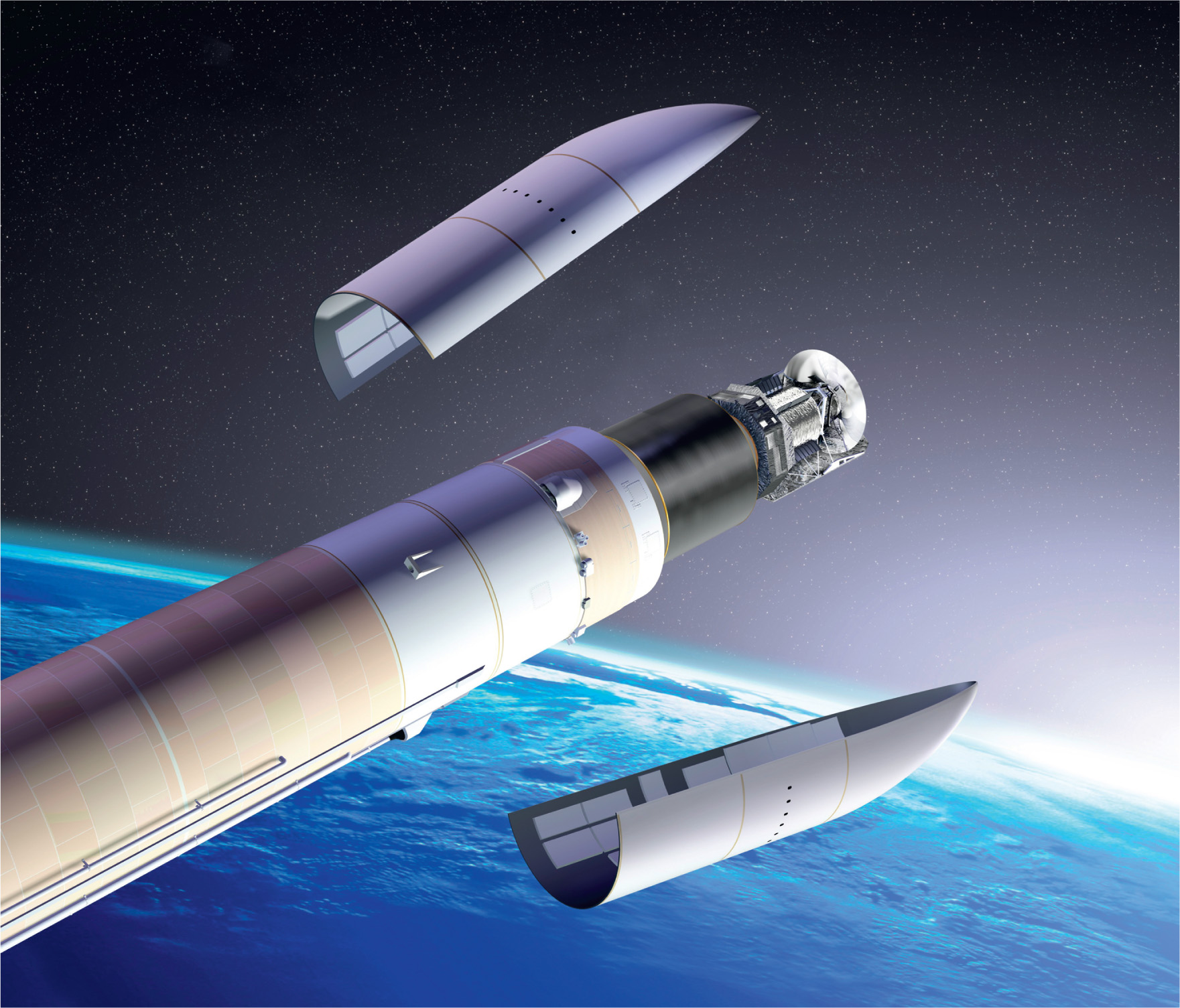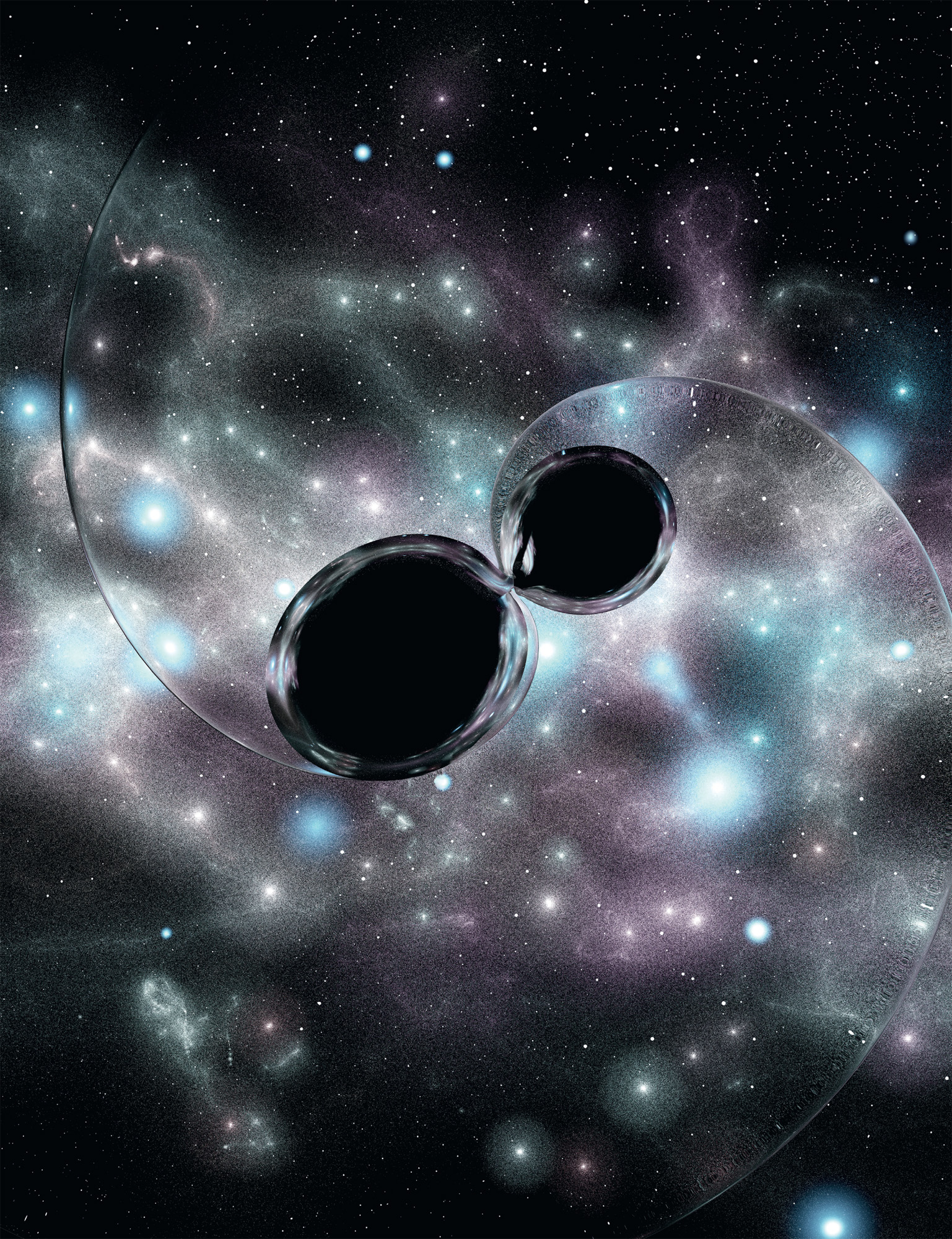When Archimedes took his famous bath (see here), the Sun was thought to go round the Earth, and the stars were thought to be points of light attached to a sphere not much further away than the Sun. Now, we know the composition of the Sun and stars, and recent experiments have revealed that these are just minor constituents of a Universe composed of exotic ‘dark matter’ and ‘dark energy’. Along the way, the age of the Universe (the time since the Big Bang) has been pinned down as 13.8 billion years.
Many observations have contributed to these discoveries, not least the studies of distant supernovae described here. But the ultimate experiment (so far) was carried on board the satellite Planck (named after the man who first explained the nature of blackbody radiation), and the results were announced early in 2015. The satellite had been launched by the European Space Agency (ESA) on board an Ariane 5 rocket on 14 May 2009. It spent years observing the sky before the first results were announced in March 2013. Observations still continued until October that year, when the satellite was switched off as it had run low on fuel. But the analysis of the data continued up until the beginning of 2015, when the definitive conclusions were announced.

© David Ducros, ESA/Science Photo Library
Planck and Herschel launch, artwork. These two missions were launched into space on 14 May 2009 by an Ariane 5 rocket. The spacecraft are mounted on top of the rocket’s second (upper) stage. Here, the covering (fairing) has separated, revealing the spacecraft inside. First Herschel (seen here), and then Planck (inside its carrier, black), separated from the upper stage and travelled away from Earth to carry out their missions.
As its name suggests, the instruments on board Planck were designed to study in detail the cosmic microwave background radiation discovered half a century earlier by Arno Penzias and Robert Wilson (see here). But where Penzias and Wilson could detect only a seemingly uniform hiss of radio noise coming from all directions in space, Planck could measure tiny differences in the temperature of the sky from place to place, anisotropies that revealed the state of the Universe at the time the radiation ‘decoupled’ from matter, a few hundred thousand years after the Big Bang. This happened when the Universe was cool enough for positive nuclei and negative electrons to join together to make neutral atoms, at which point matter stopped interacting with electromagnetic radiation. Some of the photons detected by Planck came from the regions in which matter was more densely packed and became the seeds from which galaxies and stars developed; others came from regions in the gaps between these seeds of galaxies. Crucially, this corresponds to temperature differences.
The nature of these anisotropies, or ‘ripples’, in the background radiation, depends on a balancing act in the early Universe. Matter (a combination of dark matter and the stuff we are made of, baryons) tries to pull things together by gravity. But radiation, in the form of energetic photons, tries to smooth things out. The interaction between these effects produces waves, known as acoustic oscillations, with a mixture of wavelengths. When the radiation and matter decouple, the pattern of these waves is frozen in, in the form of the temperature differences from place to place, which Planck measured. The differences are tiny. In some places, the leftover radiation from the Big Bang is a few millionths of a degree warmer, and in others a few millionths of a degree cooler. But Planck was able to measure the differences, and the experimenters were able to unravel the pattern of waves that produced them, in a process similar to the way in which the individual notes that make up a guitar chord can be unravelled by analysing the sound of the chord. The technique is called power spectrum analysis, and although it is a standard process, the complexity of the analysis was made clear by the researcher who described it as being like working out the structure of a grand piano by analysing the noise it made when it was pushed down a flight of stairs.

Power spectrum analysis of Planck data (dots) exactly matches the curve predicted by the model of the Universe described in the text – 4.9% baryonic matter, 26.8% dark matter, 68.3% dark energy and an age of 13.8 billion years.
After all that effort, the result is that we know the composition of the Universe in astonishing detail. Just 4.9 per cent of the Universe is composed of baryonic matter – what we think of as ‘ordinary’ matter (the things stars, planets and people are made of). Another 26.8 per cent of the Universe is made up of dark matter, which is ordinary in the sense that it seems to be in the form of some kind of particles, but ones which do not interact with baryonic matter at all except by gravity. And that leaves 68.3 per cent of the content of the Universe (more than two-thirds) in the form of the dark energy discovered by the supernova teams. Along the way, Planck pinned down the age of the Universe as 13.798 billion years (13.8 billion years to one decimal place), and measured the speed with which it is expanding, the Hubble constant, as 67.8 kilometres per second per Megaparsec. All of this agrees very well with measurements made by a previous satellite, known as WMAP, but WMAP’s results were a little less precise, making the Planck experiment the benchmark for our understanding of the Universe.

© ESA and the Planck Collaboration, NASA /WMAP Science Team
Cosmic Microwave Background, as seen by the European Space Agency’s Planck satellite (upper right half) and by its predecessor, NASA’s Wilkinson Microwave Anisotropy Probe (WMAP) (lower left half). Planck has delivered the most detailed image so far of the Cosmic Microwave Background Radiation.

© Russell Kightley/Science Photo Library.
Artistic impression of the merger of two black holes (centre) causing gravitational waves (spiralling lines). In September 2015, gravitational waves were detected directly for the first time. The waves emanated from the collision of two black holes, of 36 and 29 solar masses, some 1.3 billion light years away. The waves were detected by the two LIGO detectors in the USA.



